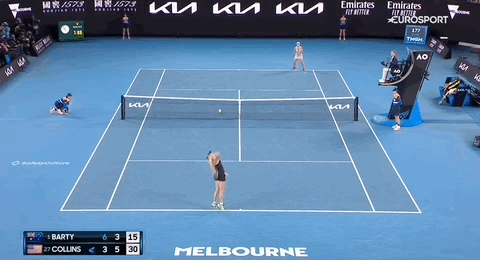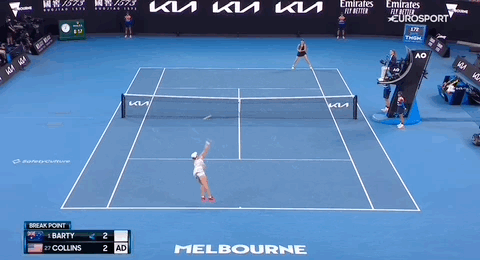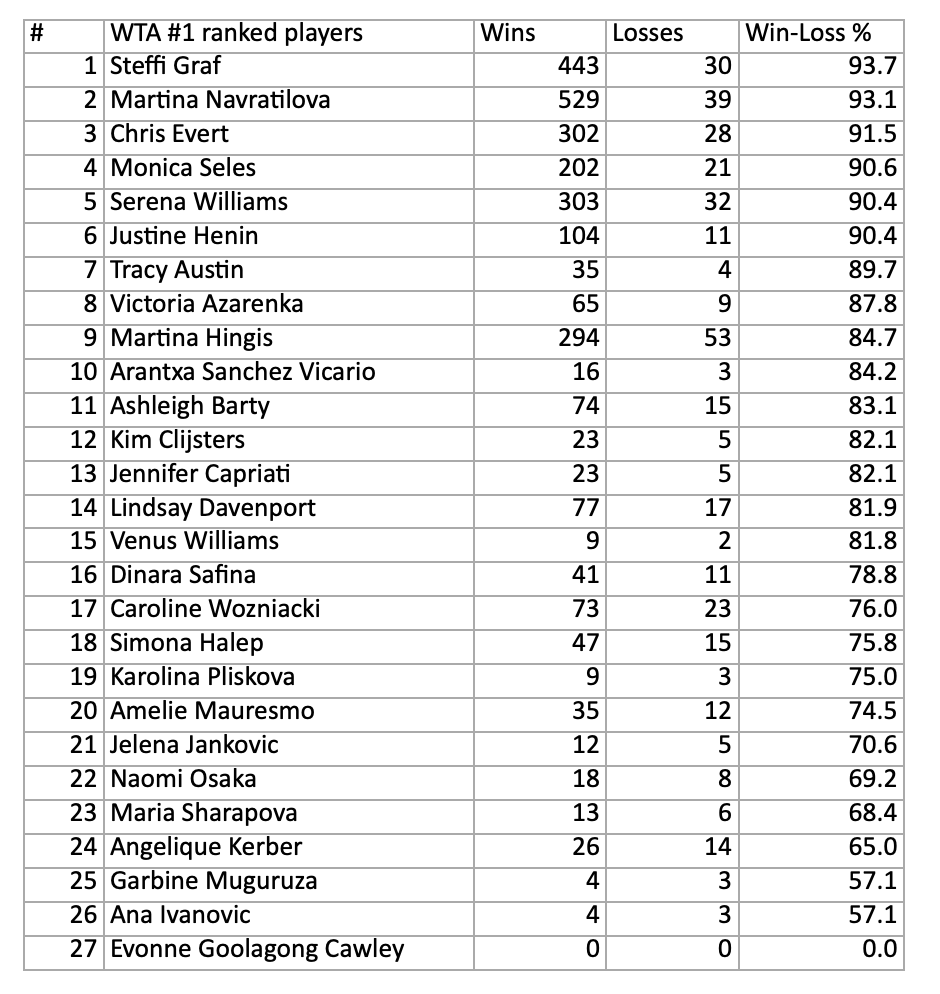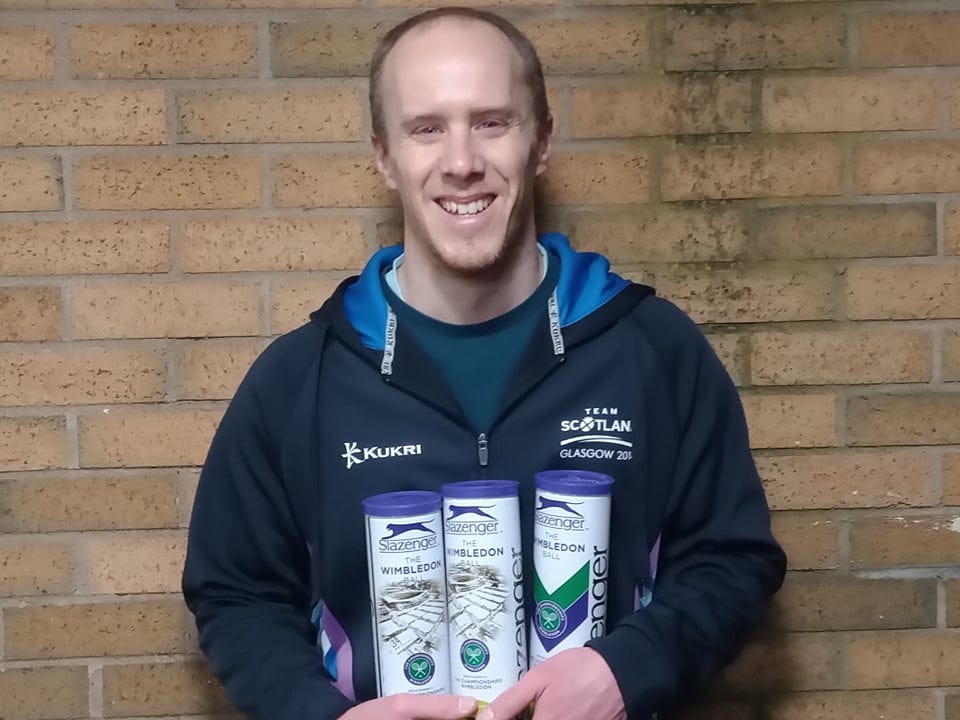Ash Barty: Achieving Her Dreams
In honour of her retirement announcement, I've compiled analyses of Ash Barty's career highlights including her dominance as world #1, her victory at Wimbledon and her title at the Australian Open.
Ash Barty - the world #1, in the form of her life - is retiring from tennis.
To say this is saddening news would be an understatement. Ash’s tennis is a sight to behold: near-perfect serving, a once-in-a-generation forehand and a wicked slice making short work of anyone that dared to play her.
The prospect of dissecting rivalries with players like Iga Swiatek and Naomi Osaka had my analytical blood pumping. Plus having a fixture, a benchmark, atop the sport was a quite familiar and comforting feeling in the context of the WTA.
But I can’t hold a grudge. Hearing Barty talk about her retirement, it all makes total sense.
This is so Ash Barty.
We can learn a lot from her. Listen to your heart. If it doesn’t feel right, you don’t have to do it.
I’d like to pay tribute to her the only way I know how - by celebrating the dreams she achieved with a throwback to some previous ‘On The Line’ articles.
Chapter 1: The Undisputed World #1.
Chapter 2: How Ash Barty defeated Karolina Pliskova at Wimbledon 2022.
Chapter 3: How Ash Barty defeated Danielle Collins at the 2022 Australian Open.
Cheers Ash! 🍻
The Undisputed World #1
Back in August, Ash Barty followed up her Wimbledon title with an emphatic title run at the Cincinnati Masters.
I proclaimed her the undisputed world #1 then. Seven months later, her claim to be indisputably world #1 has only strengthened.
Ash Barty currently sits at 7th on the leaderboard for most weeks at #1 with 120. Even more impressive though is just how long she has been atop the rankings without being challenged since September 2019.
Barty is currently tied for fourth with Chris Evert at 113 consecutive weeks and is guaranteed to break that tie next week.
The amount of winning she’s done as world #1 ain’t bad either. Take a look at her winning percentage as world #1 in comparison to her #1-ranked peers.
An 83% win-rate as world #1 is kinda insane given the volatile nature of the WTA at the moment.
Not impressed though? Barty sometimes let the ball drop against players we weren’t expecting to beat her but against the best in the world, she rarely faltered.
From the beginning of 2021 to the present, Ash went 18-1 against top-20 ranked opponents. Her only loss was to a red-hot Aryna Sabalenka at the Madrid Masters and, of course, it came down to a tightly contested third set.
All those wins meant little to Barty though if she wasn’t winning big titles. There were two clear goals in mind: winning Wimbledon and winning at her home Slam, the Australian Open.
How did she make those dreams a reality?
How Ash Barty defeated Karolina Pliskova at Wimbledon 2022
How did Ash defeat Karolina Pliskova in last year’s Wimbledon final? Throwback time!
Chip ‘n’ Slice
In almost the polar opposite fashion to Angelique Kerber, her semifinal opponent, Karolina Pliskova was often undone by the powers of the Barty slice.
Pliskova is one tall lass and getting those low slices up and down wasn’t the easiest job in the world for her.

Barty knew this would be exacerbated on the grass where the ball stays particularly low so accordingly sliced like there was no tomorrow. Take a look at how often she hit a slice compared to a topspin backhand in comparison to previous meetings between the two players.

The proof of the slice’s success is in the stats. Not only did Barty play the slice more often, she won a higher percentage of points using her slice against Pliskova than she had against any of her previous opponents.

Barty also exploited Pliskova’s height with the chip return.
Barty had one goal when returning Pliskova’s serve:
“It was a focus of ours today was to try and take Karolina’s biggest weapon, her serve, away from her as often as we could and that meant making a lot of returns, trying to put pressure on her in a sense of not allowing her to get cheap points.”
No huge return winners, nothing fancy or outlandish, just getting the ball back into play with some good ol’ fashioned chip returns.
Ordinarily, Barty returns on her forehand wing using topspin rather than chips but against Pliskova, she returned using her forehand by chipping it most of the time.

In the past, Barty had went for more on return against Pliskova, sometimes resulting in patchy return streaks. In this match, her strategy was far less risky - though Pliskova hit her spots in the second set, in the third, with everything on the line, Barty missed one return.
ONE.
Pliskova noticed Barty’s consistent ability to pressurise her:
“We played a couple and I always thought she was a bit on and off and this time I thought she was never really off.”
Neutralise the serve.
Make Pliskova play off a low-bouncing return.
Job’s a good‘un.
Pliskova’s Resistance
It wasn’t all smooth sailing though.
In the final two sets, Pliskova put on a serving clinic. She hit a very high number of first serves in (77%) and won a very high percentage of these first serve points (75%). She sometimes hit her second serve close to the same speed as her first serve to avoid an extended rally, which Barty was winning the vast majority of.
Though Ash did unpick the second serve with the chip return, Pliskova’s willingness to go risky on this shot suggests how big she was going on her serve (with little success to be fair).
The other shot that led Pliskova’s fightback was her forehand return.


Where Pliskova had started off nervily, she held her nerve as the match wore on, finding her range on return and coming up clutch in very important moments using the forehand.
She found it easier to tee off on first serves which is why Barty won her lowest percentage of first serve points during the tournament (66.7%).
Notice a correlation between the two shots leading Pliskova’s resistance?
Pliskova won the majority of the 0-4 shot rallies throughout the match as she hammered serves and returns passed Barty, who could only ride out the storm at times.
Keys to Success
With Pliskova going all guns blazing in the final two sets, there were a couple of keys to Barty’s success.
Never doubt the serve. Barty knew if she continued to serve well, she would give herself the best chance, even if she had to watch a few of Pliskova’s returns take chunks out of the paint.
Consistency with the chip n’ slice. Chipping away at Pliskova’s serves would eventually reap its rewards and would put plenty of balls in the court, trusting low bouncing balls to extend the rally and eventually unpick a streaky hitter like Pliskova.
Barty didn’t panic after the second set, instead trusting wholeheartedly in the plan she’d be using from the start.
A champion if ever there was one - trusting that the percentage plays would see her over the finishing line.
How Ash Barty defeated Danielle Collins at the 2022 Australian Open
And what about Danielle Collins only two months ago?
Danielle Collins’ Weapon of Choice
All credit to Danielle Collins, she really did make this one a ‘helluva match’ (as Barty would put it).
Finding weaknesses in Ash’s game is extremely tough but if you’ve got a massive weapon in your game, there may be wiggle room to make her uncomfortable. Collins possesses a huge cross-court backhand, hit super-flat and low over the net to sending her opponents reeling.
A lot of Collins’ resistance stemmed from this shot, particularly on return.


It was the first match in Barty’s seven at the Australian Open where she failed to win the majority of her second-serve points - the pressure was constantly on this shot.
Controlling the Centre of the Court
Often off the back of this backhand return, Collins frequently found herself able to take on balls from the middle of the court.
Where Barty’s previous opponents had struggled to do much with a central ball (generally because of the weight of Barty’s forehand/lowness of her slice), Collins was able to move Ash from side to side with ease.

I had been raving about Barty’s slice all week but in this match-up, it was not a safe option hit anywhere in the court - Collins was incredibly adept at powering her backhand over the lowest part of the net from the centre of the court.


Collins’ ability to mop up central balls gave her a significant edge when employing the wide first-serve on either wing but particularly in the ad-court. Barty really struggled to get any width on that chip backhand return when stretched out wide - something she could ordinarily get away with but had no chance of surviving against Danielle.

Just look at how often Collins was able to find success with a wide first-serve.
Frequency going wide in deuce: 13/22 = 59%
Success going wide in deuce: 10/13 = 77%
Frequency going wide in ad: 13/18 = 72%
Success going wide in ad: 10/13 = 77%
Overall frequency going wide: 26/40 = 65%
Overall success going wide: 20/26 = 77%
It’s a good play against Barty if you can deal with the chip return. Oddly enough, Barty’s other opponents throughout the tournament also did well with their own wide serves.
Barty previous opponent’s frequency going wide: 62/174 = 36%
Barty previous opponent’s success going wide: 43/62 = 69%
They just didn’t go there often enough! Whether they wanted to use it sparingly for bigger moments or if they felt as though they couldn’t cope with Barty’s chip return in the ad-court, I don’t know… but Collins was the only one to capitalise with this play, controlling the centre of the court extremely well.
No Chip Return
I’m going to level with you - whilst those previous numbers on controlling the centre of the court are still impressive from Collins, a bit more information is required to understand why they are overwhelmingly in the American’s favour.
Remember I said Collins had the third-best second-serve return % on tour?
Well, her first-serve return win % was around 26th-best on tour.
Take away Collins’ ability to pulverise the return and she can end up looking a bit listless as to how to get the ball back in play. She’s amazing at the attacking end of the returning spectrum but when it comes to defending… Collins attempted a chip-return 8% of the time against arguably thee best server in the game (now ex-best server in the game).
The other 47 returns Collins could put a racket on were topspin returns - this didn’t often end well. Barty won 30 points in the first set - 18 of these points were unreturned serves. Hard to win rallies (i.e. dominate the centre of the court) when you're getting through your service games without hitting a rally ball.
Couple Collins’ vulnerability on first-serve return with the fact Barty is probably the best spot-server in the business at the moment? Cheap n’ easy points on first-serve laid the foundation for her victory.
Forehand Reliance
Outside of her service games, in the absence of backhand slice effectivity, Barty’s most important shot became the forehand.
Down 5-1 in the second set, this was the shot that kept her alive. She’d skip around Collins’ second-serve to get that forehand into play with much more purpose than her previous matches, taking on a bit more risk but putting the match in her own hands.


Collins actually mentioned she started having back issues near the end of the second set.
“I think she started to push me back in the court a little bit more and I was having some issues fully rotating on some of my shots… Yeah it was the reason why I wasn’t sitting down the whole tournament… Today was not my best physically.”
This could have been part of the reason she missed 9/12 of her first-serves between 5-1 and 5-5. Either way, Barty capitalised with forehand aggression in spades.
So a final thought on the forehand and the match. And not in the tiebreak - though she played exceptionally there, a couple of uncharacteristic forehand errors without too much whip from Collins did indeed suggest she may have been physically ailing (see 0-0 and 5-2).
The most important point for me was won five games into the match - with the Barty forehand.

Keys to Success
Another Slam final that wasn’t as easy as it looked on paper. Here were the two keys to Barty’s success.
The first-serve. With Danielle Collins dominating with her returns, Barty’s first-serve had never been so crucial to her winning a match. To nobody’s surprise, Barty kept herself afloat with unreturnable first-serve after unreturnable first-serve to open up a set lead for herself.
Forehand reliance. With her back against the wall and her slice having no effect, Barty forced the issue with her sometimes shaky forehand. Again, total champion’s mentality - in the most important moments, this shot made all the difference.
Unlike the Wimbledon final, we saw the aggressive aspects of Barty’s game peak against a player who was consistently levelling the ball. This was a potentially uncomfortable match-up for Barty so to come through in straight sets…
Bravo!
Wishing Ash Barty All The Best
All credit to Ash Barty - she achieved her dreams in tennis.
I’ve had a blast analysing her game over the course of the last year and I’m sure you’ve had a blast watching her. I am excited to see where she goes next because whatever she puts her mind towards she seems to excel at.
Whatever it is she does, I hope it brings her the happiness and fulfilment she is looking for.
All the best Ash, good luck for the future!
Update on where I am this week:
I had to stop the press for this article. I am halfway through an analysis of Iga’s wins over Simona Halep and Maria Sakkari at Indian Wells but thought this story should be the priority. I’ll get it out in the next couple of days, just a little later than I planned to release it.
I won’t be writing about Taylor Fritz’s win over Rafael Nadal. Both players were injured and the match became rather scrappy because of it. All credit to Fritz for the win but I’m sure you can appreciate it wasn’t the best match from an analytical perspective.
The winner of the latest On The Line prize draw is PJ - he wins three tins of Slazenger Wimbledon tennis balls!
If you share the latest On The Line post or subscribe to the blog for free, you'll be entered into the next prize draw. Winner to be announced in April!
Also, we’re moving home! We are set to move to onthelinetennis.uk in a number of weeks. Your new subscriber request may go to junk mail so PLEASE look out for it!
You can sign up early for free by clicking the below button. Be kind - we’re still under maintenance so things will look a bit scrappy at the moment!
Follow me on Facebook (@onthelinetennisblog), Twitter (@jackedward1994) and Instagram (@jack221194)!









